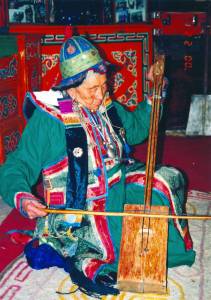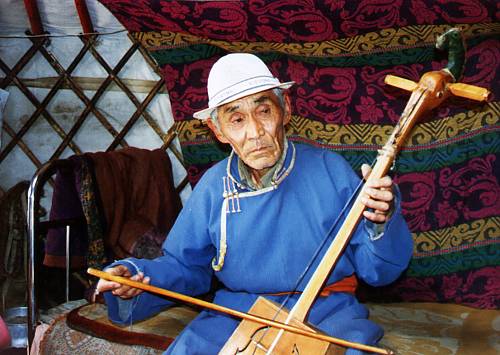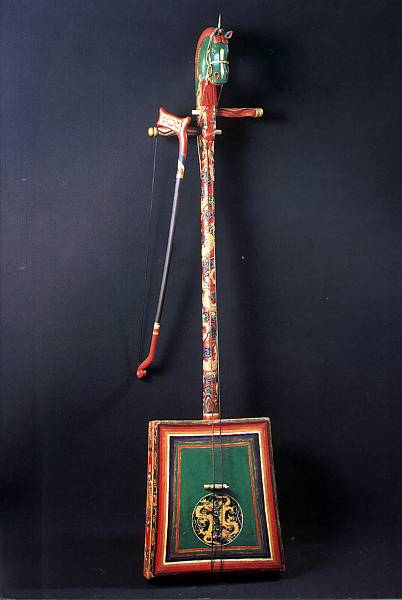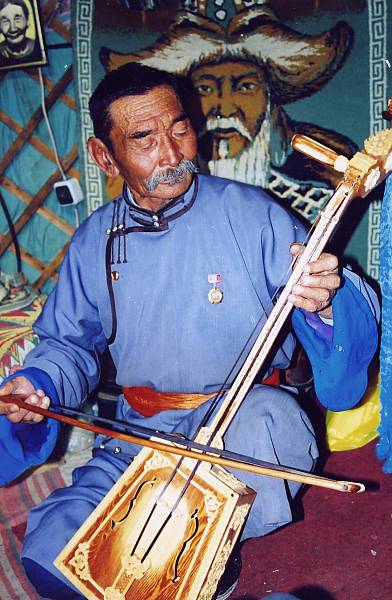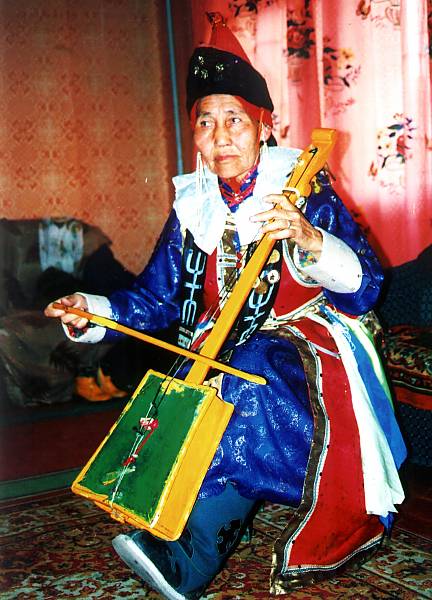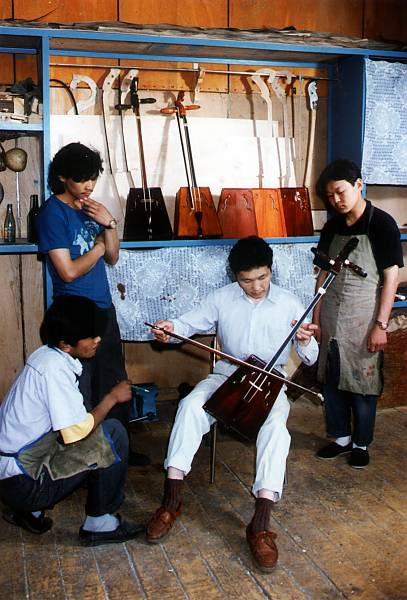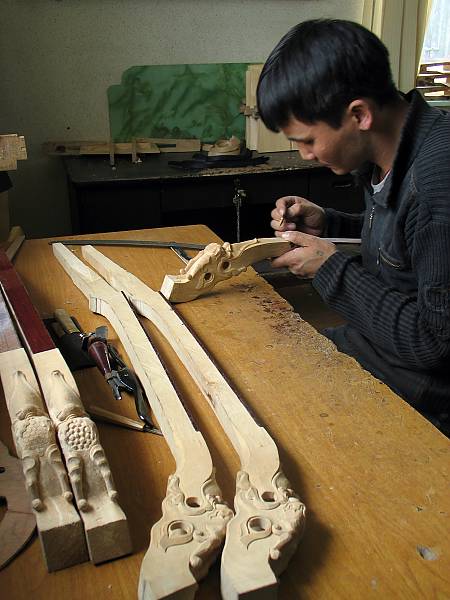Traditional music of the Morin Khuur
Inscribed in 2008 (3.COM) on the Representative List of the Intangible Cultural Heritage of Humanity (originally proclaimed in 2003)
The two-stringed fiddle morin khuur has figured prominently in Mongolia’s nomad culture. String instruments adorned with horse heads are attested to by written sources dating from the Mongol empire of the thirteenth and fourteenth centuries. The fiddle’s significance extends beyond its function as a musical instrument, for it was traditionally an integral part of rituals and everyday activities of the Mongolian nomads.
The design of the morin khuur is closely linked to the all-important cult of the horse. The instrument’s hollow trapezoid-shaped body is attached to a long fretless neck bearing a carved horse head at its extremity. Just below the head, two tuning pegs jut out like ears from either side of the neck. The soundboard is covered with animal skin, and the strings and bow are made of horsehair. The instrument’s characteristic sound is produced by sliding or stroking the bow against the two strings. Common techniques include multiple stroking by the right hand and a variety of left-hand fingering. It is mainly played in solo fashion but sometimes accompanies dances, long songs (urtiin duu), mythical tales, ceremonies and everyday tasks related to horses. To this day, the morin khuur repertory has retained some tunes (tatlaga) specifically intended to tame animals. Owing to the simultaneous presence of a main tone and overtones, morin khuur music has always been difficult to transcribe using standard notation. It has been transmitted orally from master to apprentice for many generations.
Over the past forty years, most Mongolians have settled in urban centres, far from the morin khuur’s historical and spiritual context. Moreover, the tuning of the instrument is often adapted to the technical requirements of stage performance, resulting in higher and louder sounds that erase many timbral subtleties. Fortunately, surviving herding communities in southern Mongolia have managed to preserve many aspects of morin khuur playing along with related rituals and customs.


